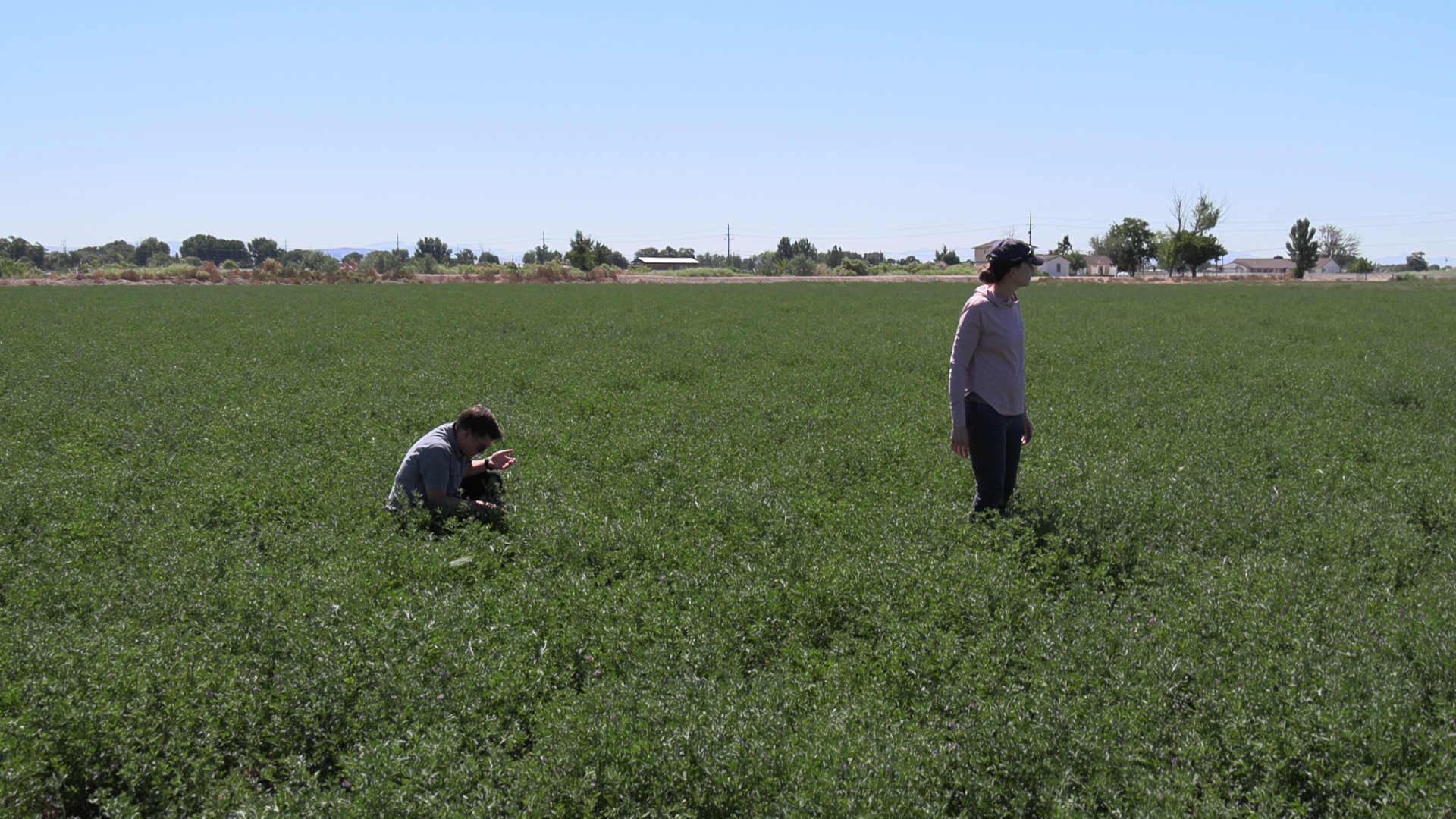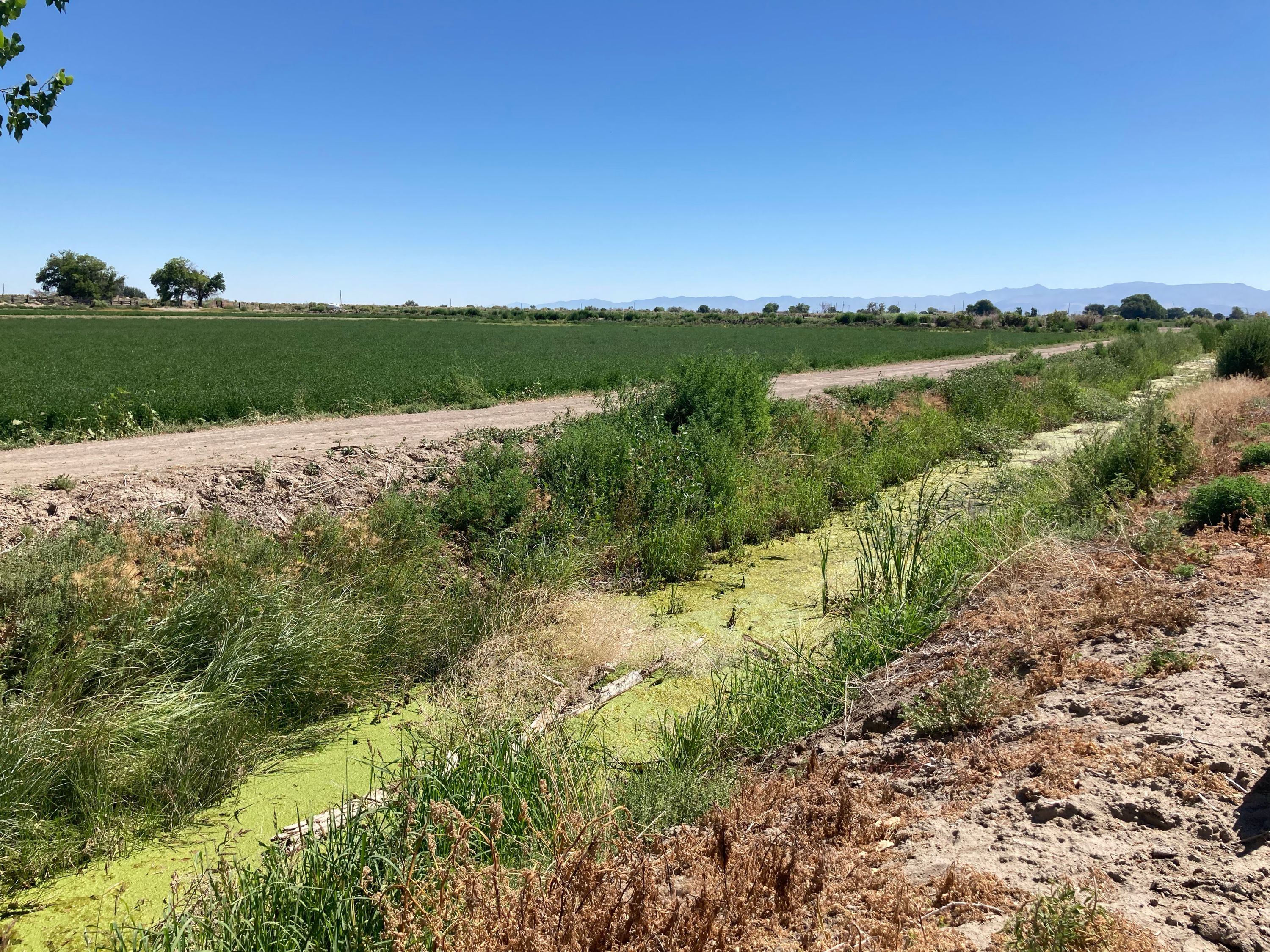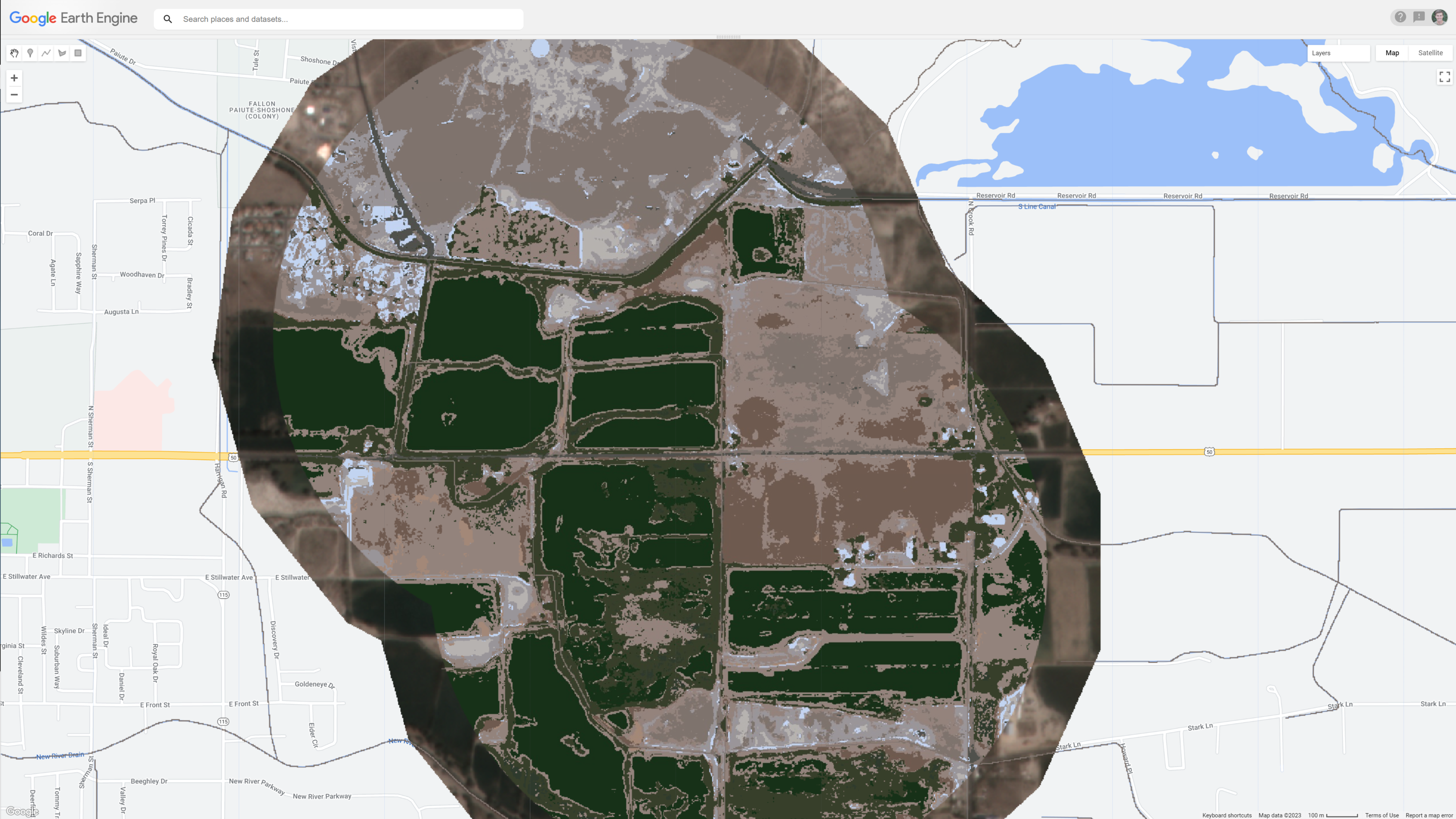Aphids, Irrigation Ditches and Satellites: Biocontrol Research in Nevada

Alfalfa-eating aphids are only about an eighth of an inch long. But the tiny sap-sucking insects are a serious pest for growers, capable of stunting or even killing alfalfa plants.
In the field they’re difficult to see from even a few feet away, so the last thing you might think of using for research into biological control of aphids are satellites orbiting 300 miles above Earth.
Yet that’s exactly what researchers at the University of Nevada, Reno are indeed using – and they’re seeing things from space you just can’t see from the ground.
Elizabeth Pringle, an associate professor at the university, is leading the research, which was funded in part by the Western IPM Center.
“We’re interested in the effects of predators on alfalfa aphid pests and whether we can encourage the densities of those predators through the use of conservation management,” she explained. “Basically, do the different kinds of plants and habitats that occur around alfalfa fields influence how many predators there are and how well they suppress aphid pests?”
Pringle is specifically looking at weedy irrigation ditches that border many alfalfa fields in Northern Nevada and whether that unmanaged vegetation is a refuge for predator insects. The question is more than academic because some irrigation districts control the weeds growing along the ditches by burning them or spraying herbicides while others leave them untreated and weedy.

If weedy ditches do enhance biological control of aphids (and don’t cause other problems that offset the benefits), growers and irrigation districts could manage their ditches to provide a refuge for predator insects, improving growers’ integrated pest management programs and perhaps reducing their insecticide sprays.
The research didn’t just look at the ditches, however, and that’s where they satellites come into play. Anson Call, a Ph.D. candidate in Pringle’s lab, collected bugs in the field and analyzed a lot of satellite data.
“The goal of that analysis was to really map the available resources for the different pests and predators in the areas surrounding the alfalfa farms,” he said. “In the past, you’d do this by looking at maps and manually categorizing the different types of habitats you would find around a field.”
Turns out, satellite imagery does that better.
First, the SuperDove constellation of satellites Pringle and Call contracted with fly over their study area frequently so they could track changes in vegetation throughout the growing season and then correlate those changes to the number of pests and predators collected in the fields over the same time period.
“That’s important because the environment fluctuates,” Call said. “Having that timely imagery really helps us capture the landscape as the insects see it and as their resources fluctuate throughout the year.”
The satellite imagery, and machine-learning analysis of those images, also resulted in a more accurate map of the vegetation types around the fields than a person on the ground would have produced. In all, the researchers assigned 11 different categories to the land around their study sites, ranging from the fields themselves to natural vegetation, weedy patches and even roads and cars.

“It was very detailed and super accurate,” Call said. Surprisingly so, Pringle added.
“One of the unexpected results of this study,” she said, “and I think one of the most interesting as we go forward, is that some weeds that we characterized from the satellite imagery were not visible from our ground surveys. They were only picked up by our remote-sensing techniques.”
The satellite images also made it easier to measure distances to attempt to answer one of their other research questions – how the location of the various landscape elements affects predator-insect densities.
Overall, here’s what the research found:
- The number of predator insects did affect aphid populations. More predators equaled fewer aphids.
- Weedy areas were the most important predictors of predator densities, but their importance was seasonal. The benefits were greater in the spring than the fall.
- Distance did matter and weedy areas closest to the field were the most beneficial in terms of boosting the number of biocontrol insects.
The next step is determining the relative cost and benefits from those weedy areas and overgrown ditches.
“It isn’t enough to know just that weeds can increase biocontrol and increase the densities of beneficials,” Pringle said. “What kind of negative impacts are those weeds having on your alfalfa hay crop as well? That’s the really important next question to address.”
But, if the benefits are shown to outweigh any costs, she is intrigued by the potential of using these weedy ditches as an “oasis of life” for plants and insects in an otherwise arid desert.
“There’s potential for irrigation districts to manage these ditches in ways that could promote positive impacts on surrounding farms,” she said. “That could mean thinking about what kinds of plants are in the ditches and encouraging plants that tend to be better hosts for the biocontrol predators, and retaining some of the natural biodiversity we get along these ditches.”